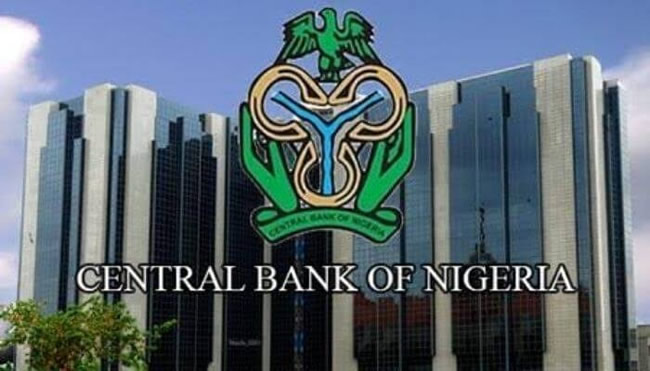
Fresh facts emerged over the weekend that cash-trapped Deposit Money Banks and Discount Houses went into aggressive borrowing from the Central Bank of Nigeria (CBN), accessing a whooping N3 trillion through the Standing Lending Facility.
This is in contrast to ₦493.6 billion deposited by a few lenders through the CBN’s Standing Deposit Facility, reports Nigerian Tribune.
Banks’ borrowing from the Central Bank of Nigeria (CBN) had earlier dropped by 76.4 per cent in August 2024 to N4.04 trillion from N17.12 trillion reported in July 2024, following the increase in the Standing Lending Facility (SLF) rate to 31.75 percent.
According to financial data released by the CBN, the reported N4.04 trillion was the third lowest in 2024 as Nigerian banks exercise caution in borrowing from the apex bank.
The CBN weeks ago, announced the lifting of the suspension on its Standing Lending Facility for authorised dealers. Standing Facilities are used by the Central Bank in the framework of the monetary policy objectives to regulate money supply and liquidity. The Standing Lending Facility enables banks to borrow from the CBN.
A circular signed by the Director, Financial Markets Department, Omolara Duke, said that the suspension was lifted in alignment with the decision taken at the last Monetary Policy Committee meeting which adjusted the upper corridor of the standing facilities to 5.00 percent from 1.00 percent around the Monetary Policy Rate.
The Monetary Policy Committee at the last meeting also raised the Monetary Policy Rate to 26.75 percent.
The Standing Lending Facility (SLF) rate, which banks use to borrow short-term funds from the CBN, was raised to 31.75 percent.
The SDF rate, applicable to deposits made by banks at the CBN, was also increased to 25.75 percent.
This activity according to market participants helped the banking system liquidity to climb 4.7 percent to print at ₦712.3 billion.
Nigerian Deposit Money Banks’ borrowing from the Central Bank of Nigeria, CBN, hit an all-time high of N5.38 trillion in the first week of July 2024 amid liquidity concerns.
This is according to a recent CBN’s Standing Lending Facility (SLF) report. The N5.38 trillion represents a 245 percent increase from N1.56 trillion borrowed by banks in the first week of June 2024.
Nigerian Deposit Money Banks’ borrowing from the Central Bank of Nigeria, CBN, hit an all-time high of N5.38 trillion in the first week of July 2024 amid liquidity concerns. This is according to a recent CBN’s Standing Lending Facility (SLF) report.
The N5.38 trillion represents a 245 percent increase from N1.56 trillion borrowed by banks in the first week of June 2024. On a year-on-year basis, it represents a 202 percent rise from N1.78 trillion borrowed by banks in the first week of July 2023, according to data from the CBN. The Standing Lending Facility (SLF), is one way the central bank makes liquidity available to the banks.
Banks’ borrowing from the CBN, month-on-month (MoM) in May stood at N10.9 trillion. While the CBN lends money to banks through the SLF at interest rate of 100 basis points (bpts) above the Monetary Policy Rate (MPR), it also lends money to banks through Repurchase (Repo) arrangement, which involves the purchase of banks’ securities with the agreement to sell back at a specific date and usually for a higher price.
On the other hand, the CBN accepts deposits from banks through its Standing Deposit Facility (SDF) and pays an interest rate of 300 bpts below the MPR.
According to CBN’s financial data banks’ borrowing through the SLF dropped to N10.9 trillion in May from N12.2 trillion in April.
Banks borrowing from CBN has declined for two consecutive months since January when it rose by 268.7 percent to N3.6 trillion from N976.29 billion in December 2023.
On the other hand, banks’ deposits with the apex bank through the SDF rose MoM by 120 percent to N943.08 billion in May from N428.9 billion in April.
These developments were driven by improvement in amount of idle cash (liquidity) in the interbank money market.







